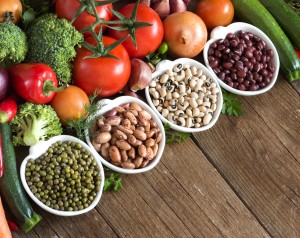How to Strengthen Your Appetite Control

Various factors determine how satisfying foods are, and you can use them to help you control your appetite.
What makes a food or a meal filling? You might assume that satisfying your appetite depends – more or less – on how much food you eat. And, that might also explain why so many people feel that in order to keep their appetite in check, they simply have to get used to eating less food.
Don’t get me wrong, portion control is definitely an important factor in controlling your food intake. But there are other factors at play, too. The composition of the food – the amount of fat, carbohydrate and protein it has – determines, in part, how satiating a food is; texture plays a role, too. And even before a food passes your lips or enters your stomach, the sight and smell of food, and any of your past experiences with that food, sends signals to your brain that can influence how much you eat.
Factors that can influence how much you eat:
Anticipating that the food will fill you up. When you are about to eat something, the sight and smell of the food signals the body that nutrients are on the way. These cues, sent from your senses to your brain, prepare your body for the process of digestion and absorption, but something else happens: your brain anticipates that the food is going to satisfy you, too. The influences of your senses of sight and smell really do matter – it’s been shown, for instance, that a bowl of soup is perceived as more filling when it is consumed normally than if the same volume of soup is delivered in a way that bypasses your sensory organs (say, through a tube going directly into the stomach). So, before you take a bite, take a moment to appreciate the color and aroma of your food and remind yourself of how satisfying your meal is going to be.
The satiating power of protein. Protein is more satiating than carbohydrate, which tends to be more satiating than fat. These satiating effects of protein are primarily physiologic (through influences on, among other things, hormones in your digestive tract that signal fullness) but there are sensory influences – the taste and texture of protein-rich foods tend to promote a feeling of fullness, too.
Fiber is filling. Fiber helps with appetite control in a number of ways. First, fiber makes foods more bulky: high-fiber foods, like vegetables and fruits, take up a fair amount of room in your stomach so they fill you up, but at a relatively low calorie cost. Fiber also takes a while to digest, so it slows the rate at which foods leave your stomach. And, soluble fibers (found in foods like apples, barley, beans and oats) thicken up once they hit your stomach – and that can also contribute to a feeling of fullness.
Texture matters, too. In general, liquids that are thick and viscous are perceived as being more filling than watery fluids, even if the calorie counts are the same. This is another example of how the sensory property of a food affects expectations of quenching hunger – thicker liquids tend to signal more nutrients than watery fluids that are more likely associated with quenching your thirst. And there are studies to support this: smoothies that are thickened with a bit of calorie-free cellulose, for example, are rated as more filling than thinner ones, even though both contain the same amount of protein and other nutrients, as well as calories.1 Another study found that simply whipping more air into a smoothie, which doubled the volume, led study subjects to report less hunger at their next meal, which resulted in the intake of 12% fewer calories at their next meal.
The hungrier you are, the more you’re likely to eat. Most people are aware of this – if you wait until you’re ravenous, you’re probably going to overeat once you get the chance. One reason for this is that as your hunger level rises, you become much more sensitive to salty and sweet tastes3, probably because these two flavors tend to signal that a food is edible (compared to say, a bitter taste). Food manufacturers must know this…is it any wonder that so many of our snack foods – the ones we dive into when we’re famished – are loaded down with salt and sugar?
by Susan Bowerman, MS, RD, CSSD, FAND
Susan Bowerman is Director of Nutrition Training at Herbalife. Susan is a Registered Dietitian and a Board-Certified Specialist in Sports Dietetics.
Article release at DiscoverGoodNutrition.com –
How to Strengthen Your Appetite Control